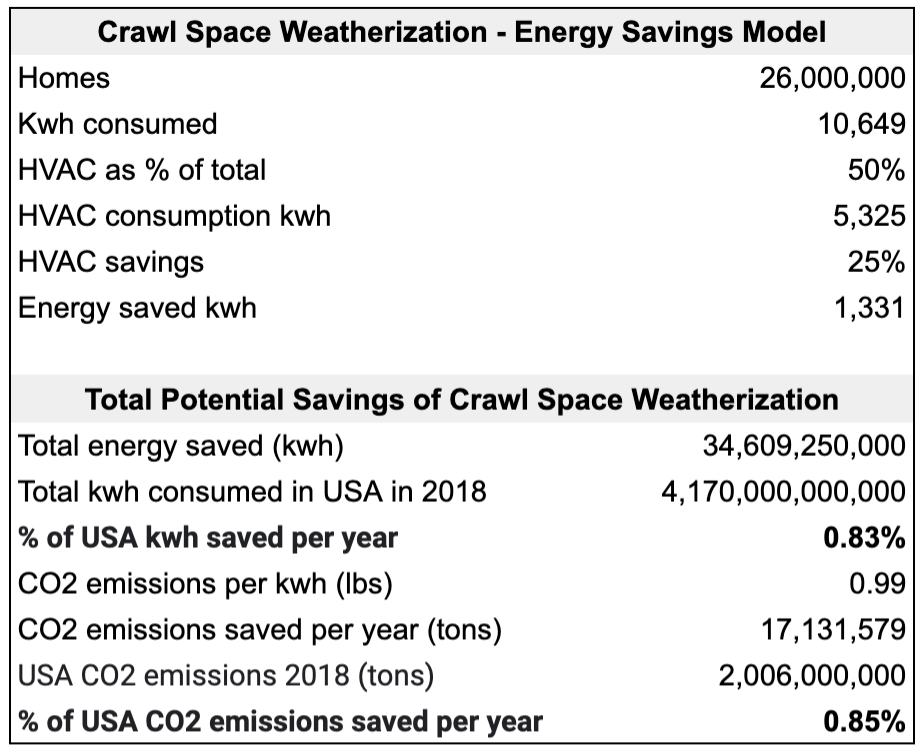
Meet Sam, your new AI-powered home management assistant, designed to make managing and maintaining your home easier and smarter than ever.
Learn More

.jpg)
.jpg)

Crawl space weatherization can help fight global warming by reducing carbon emissions more than almost any other single home improvement project. Blog Series: Energy Efficient Homes & Building a Sustainable Economy
Crawl space weatherization presents a major opportunity to reduce a home’s carbon footprint and help combat global warming. Crawl space weatherization can reduce carbon emissions more than almost any other single home improvement project. In fact, if all the crawl spaces in the US were weatherized, US carbon gas emissions would be reduced by approximately 0.85% annually.
Residential energy use accounts for roughly 20% of greenhouse gas (GHG) emissions in the United States. It is imperative that homeowners do what they can at home to reduce their carbon footprint. There are many ways to reduce your carbon footprint at home. Homeowners can install LED light bulbs, energy efficient appliances and programmable thermostats. Homeowners can also properly weatherize areas of the home where heated or air conditioned air can escape such as the attic, crawl space and around windows.
The recommended actions include sealing and conditioning vented crawl spaces according to research published by the National Renewable Energy Laboratory in 2013.
But how much energy does it really save? Well, Southern California Edison determined in a recent study that crawl space weatherization can reduce your HVAC energy consumption alone by 18-32%. They also point out that, as of 2008, about 26 million homes have crawl spaces that need to be weatherized.
According to the U.S. Energy Information Administration:
The model below demonstrates the energy savings potential of weatherizing crawl spaces.
This post does not analyze the carbon footprint reduction that results from preventing wood rot and replacement of baseboards. Nor does this post examine the health benefits to the individual or the community which are expected to be significant. Coming soon!

Looking to take action on the numbers above? With Shipshape, upgrading your crawl space and home systems is easier than ever. Our smart monitoring, retrofit kits, and expert support help you cut energy use, reduce emissions, and increase home comfort. Whether you're ready to weatherize or just exploring your options, Shipshape has the tools to help.
References
USEIA FAQs: How much carbon dioxide is produced per kilowatthour of US electricity generation?
USEIA FAQs: How much electricity does and American home use?
USEIA: Use of energy explained
Energy Star: Basement & Crawlspace Air Sealing and Insulating Project
Southern California Edison: Residential Crawl Space and Attic Conditioning and Sealing Retrofits